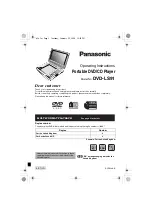
MISCELLANEOUS
45
Medium Tone (No Acknowledge)
•
The paged mobile did not acknowledge the page
(Section 6.7).
•
The message that was sent has not been acknowl-
edged (Section 6.8).
•
The status condition that was sent has not been
acknowledged (Section 6.9).
Five Beeps (Recurring)
•
The page was received (Section 6.7).
Two Short Tones
•
A private call was received (Section 6.5).
Five Beeps
•
The paged mobile received the page and acknowl-
edged it (Section 6.7).
•
The message that was sent has been received and
acknowledged (Section 6.8).
•
The status condition that was sent has been received
and acknowledged (Section 6.9).
Four Beeps
•
The emergency alarm condition was acknowledged
(Section 6.10).
•
Four low tone beeps indicate call back mode (the
system is no longer busy)
Alternating Tone
•
Dynamic regrouping has occurred (Section 6.13).
•
Dynamic regrouping has occurred but the
regrouping channel is not selected (Section 6.13).
Busy Signal
•
The radio system is busy or a busy condition exists
when making a telephone call.
Three Medium Pitch Tones
•
A channel is available after a busy condition
occurred (SMARTNET/SmartZone only).
7.2 SYSTEM OPERATOR PROGRAMMING
As noted several times in this manual, program-
ming determines the availability and specific operation
of many features. This usually refers to the program-
ming performed by the PCConfigure programmer
when the radio was set up, not to any programming a
user can perform. If a feature is controlled by a front
panel option switch and that switch is not available, it
is probably not available.
If the Keypad Programming option switch is
available, you can reprogram some conventional
channel parameters. Refer to Section 5.17 for more
information.
7.3 SPEAKING INTO MICROPHONE
For best results, hold the transceiver about 1-2
inches from your mouth and speak at a normal conver-
sational level. Do not shout since it distorts your voice
and does not increase range. Make sure that the PTT
(push-to-talk) switch is pressed before you begin to
speak and released as soon as the message is complete.
7.4 OPERATION AT EXTENDED RANGE
When approaching the limits of radio range, the
other party may not be able to hear your transmissions
and there may be an increase in background noise
when messages are received. You may still be out of
range even though you can hear a message. The reason
for this is that the signal you are receiving is usually
transmitted at a higher power level than the one trans-
mitted by your transceiver. Communication may be
improved by moving to higher ground or away from
shielding objects such as tall buildings or hills.
7.5 LICENSING
A government license is usually required to
operate this transceiver on the air.
7.6 TRANSCEIVER SERVICE
If the transceiver is not responding to any key
presses, the keypad may be locked. Refer to Section
3.6 for more information.
Содержание 5100 SERIES
Страница 47: ......



































